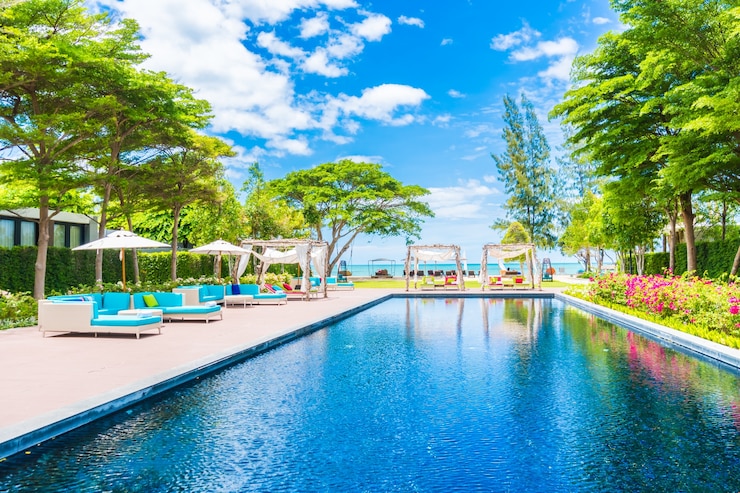How long is a standard swimming pool? Some considerations must be made when choosing a location. To keep the installation out of sight of the neighbours, choose a place that is both light and wind-protected.
When it comes to house improvement, installing a swimming pool is a multipurpose item. Everything from a simple family swims to a pool party, and even a fitness regimen that ranges from light exercise to intense training can be done in them.
On the other hand, a house renovation or pool purchase necessitates many considerations. A pool’s size is an essential factor to take into account. There are various factors to consider here, such as whether or not you have the space for a pool and what kind of pool would be most appropriate for your needs.
What is the Standard Size of a Swimming Pool?
There are several variables to consider when determining the average size of a swimming pool. For example, you’ll want to consider what kind of pool you want, the material it’s constructed from, and how it looks.
It is common practice to measure the length and width of a swimming pool. The percentages are based on a 2-to-1 ratio based on the typical backyard size pools are put in. 18 feet by 48 feet for swimming pool sizes is the most popular.
Having this much space will allow you to swim around and play games without having even eight people crammed into it. The rectangular shape of a pool is a good candidate for this.
Different Kinds of Swimming Pool Sizes
In-ground Pool
An in-ground swimming pool’s durability and neat look make them a popular choice. On average, largely the material it is constructed from influences the size of an in-ground pool. For vinyl pools, 16 feet by 32 feet, 18 feet by 36 feet, and 20 feet by 40 feet are the most common sizes. Among these rectangles, the one measuring 16 ft x 32 ft is the most popular.
Above-ground Pool
Because they don’t involve excavating into your yard, above-ground swimming pools are easier to install. This also makes it easy to remove the pool if you decide to do so many years later.
Typically, aboveground swimming pools come in three different sizes. Pools of 21 feet by 52 feet are included in this average. A 15-foot-by-30-foot-by-52-inch-high oval is also common for large aboveground pools.
Although the most common size is 24 feet by 52 feet, the most preferred form is a round shape.
Lap Pool
An ideal lap pool is large enough to comfortably accommodate a swimmer. However, it does not have the same space for “swimming around” as a round family pool. Therefore, lap pools are often long and narrow in design to accommodate this.
Plunge Pool
Plunge pools are usually deep, although they aren’t obligated to meet many other standards. Instead, they’re characterized by how they’re put to use.
There are various ways plunge pools can be used, including at the bottoms of waterfalls or the end of a sauna or hot tub. Regardless, they should be deep enough to submerge the entire body.
Endless Pool
The “endless pool” concept is intriguing because it goes well beyond the typical home pool. It’s important to note that these pools are designed with exercise, as a slight current is running through them. Larger sizes are available, although the standard size for an endless spool is less than 10 meters long, with a maximum of 15 meters.
Small Pool
If you only have room for a little swimming pool, you may wonder how small it is.
A 600-square-foot or smaller pool is generally considered a modest one. It’s up to you to decide what pool to put in that spot.
Final Words
The size is determined by your preferences, money, and, most importantly, the available space. It’s a frequent misconception that a swimming pool can only be installed in a large backyard. However, the market offers a wide range of sizes. There isn’t a standard. 18×36-foot in-ground pools are the most common size.
Above-ground pools are commonly found in 21-, 24-, and 27-feet lengths. It is possible to design the pools in any number of ways.
